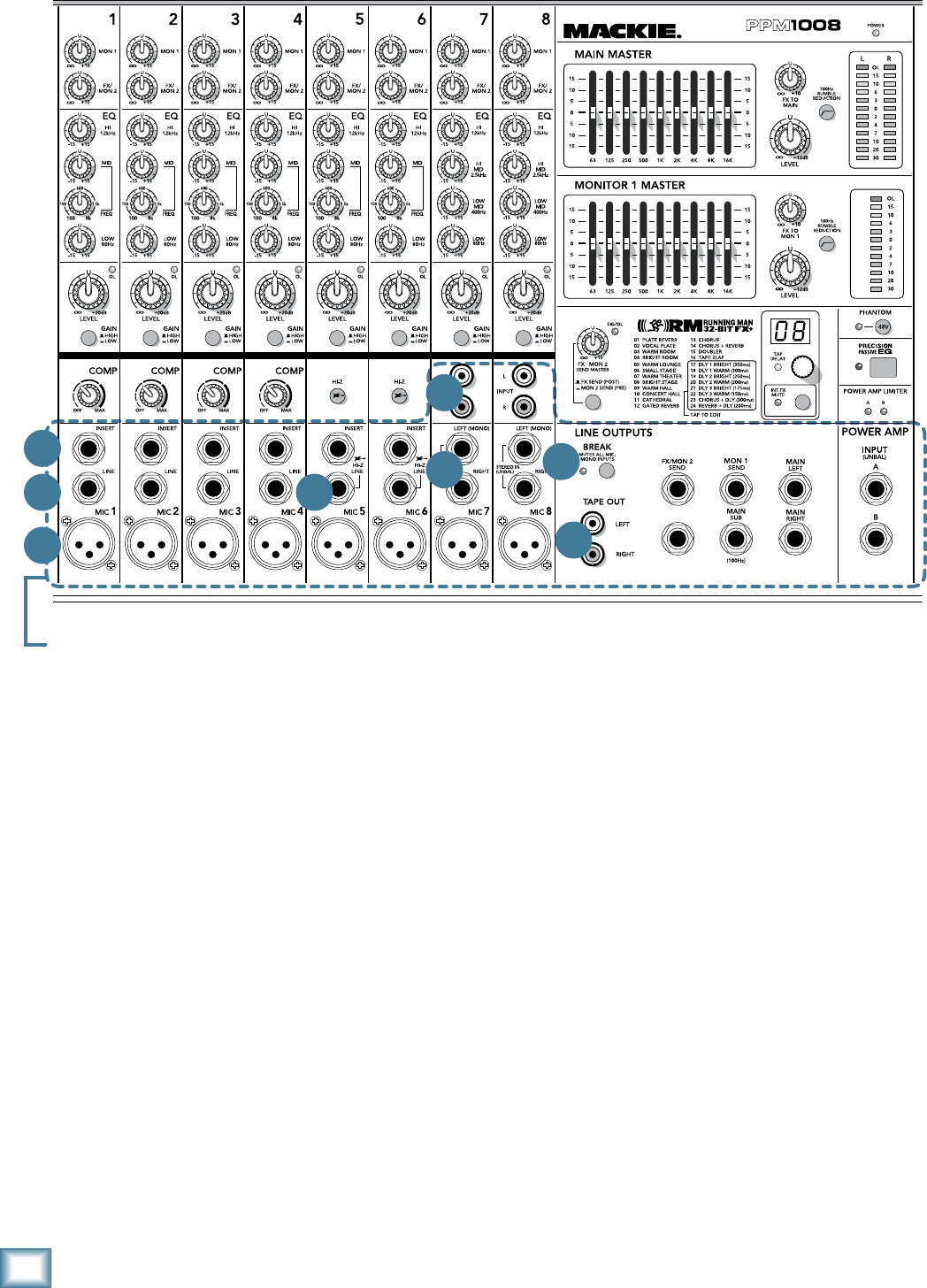
12
PPM1008
PPM1008
Front Panel Features
7. MIC INPUTS
We use phantom-powered, balanced microphone
inputs just like the big studio mega-consoles, for exactly
the same reason: This kind of circuit is excellent at
rejecting hum and noise. You can plug in almost any
kind of mic that has a standard XLR-type male mic con-
nector.
Professional ribbon, dynamic, and condenser mics all
sound excellent through these inputs. The mic inputs
will handle any kind of mic level you can toss at them,
without overloading.
Microphone-level signals are passed through the
mixer's splendid microphone preamplifiers to become
line-level signals. Because more gain is required to
boost the microphone level signals, make sure the gain
switch [32] is in the up position when you are using
microphones.
Channels 1 to 4 have the extra benefit of built-in sig-
nal in-line compressors [33]. These can be adjusted to
add just the right amount of compression to your vocals
and help prevent distortion and the effects of tonsillitis.
Patchbay section
This is where you plug in things such as: microphones,
line-level instruments, guitars, and effects, a recorder,
PA system, powered monitors, powered subwoofer etc.
(The speaker-level outputs from the internal power
amplifiers are on the rear panel.) Check out the hookup
diagrams for some connection ideas. See Appendix B
(page 25) for further details and some rather lovely
drawings of the connectors you can use with your mixer.
FOOT SWITCH
FX
/
OUTPUT POWER: @ 4 OHMS, 800 WATTS PEAK PER CH
MINIMUM LOAD: 4 OHMS PER CHANNEL
2 X 800W PROFESSIONAL POWERED MIXER
2 X 800W PROFESSIONAL POWERED MIXER
7
8 9
10
11
12
13
14


















